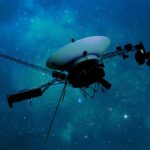China’s Mars exploration is advancing with unprecedented speed, as the nation now aims to bring Mars samples back to Earth before NASA can achieve the same feat.
With a targeted mission launch in 2028, two years earlier than previously planned, China’s space agency is competing directly with NASA’s Mars sample return plan, which has a more extended timeline.
As both countries race to unlock the mysteries of the Red Planet, a new space race for Martian samples is well underway. What’s at stake, and who will ultimately succeed?
What is Driving the Rush to Bring Mars Samples to Earth?
The race to retrieve Mars samples has intensified due to the unique scientific insights they promise. Mars, with its ancient landscapes and potential traces of past microbial life, has long been a focus for scientists. The chance to analyze Martian soil directly on Earth could reveal if life ever existed there, helping us understand more about the Red Planet and potentially our own origins.
In a landmark decision, China has set an ambitious goal to launch its Mars sample-return mission in 2028, utilizing its Tianwen-3 mission. This accelerated plan marks China’s commitment to becoming a major player in space exploration.
China’s Mars exploration efforts fall under the Tianwen program, with the successful Tianwen-1 mission as its first Mars achievement. This mission, launched in 2020, included an orbiter, a lander, and a rover—making China the third country to land on Mars.
NASA’s Mars sample return mission is a partnership with the European Space Agency (ESA). The mission is projected to take until the early 2030s to complete, with NASA focusing on selecting the best Martian samples, which are currently being collected by the Perseverance Rover.
How Will China’s Tianwen-3 Mission Collect Mars Samples?
The Tianwen-3 mission involves a complex plan to land, collect samples, and return them to Earth. Similar to their Chang’e lunar missions, China will use two launches to send a lander and return orbiter to Mars, then retrieve samples using a scoop and drill mechanism.
Technical Challenges for Sample Return
Mars’ thin atmosphere and extreme temperature fluctuations pose significant challenges. Both countries must devise robust technologies to safeguard collected samples from contamination during transit to Earth.
Martian samples could contain ancient life signatures or unique geological features. Examining them could yield insights into Mars’ history and possibly life itself.
Where Will China Land on Mars to Collect Samples?
China’s Tianwen-3 mission will likely target Utopia Planitia, a basin that China has already explored with its Zhurong rover. This site offers a stable environment and known geological features that could hold valuable samples.
China’s rapid achievements in space exploration, especially with its Chang’e missions on the Moon, provide a strong foundation for Mars sample return. With each success, China’s position as a space exploration leader strengthens.
Bringing Mars samples back is more than just a national achievement. It has the potential to answer fundamental questions about the universe, life beyond Earth, and even the origins of life on our planet.
How Do China’s and NASA’s Approaches Differ?
China’s Tianwen-3 mission is shorter and involves fewer steps compared to NASA’s collaborative and intricate plan with ESA. While China aims for a quicker return, NASA’s approach emphasizes thorough sample selection and analysis.
The political stakes are high. As with the Soviet Union’s Sputnik in 1957, a successful Mars sample return by China could signal a shift in global space dominance.
Both countries have scientific goals, but the competitive aspect can’t be ignored. Each country wants to demonstrate technological and scientific prowess on a global stage.
Editor’s Recommendations
- Euclid Space Telescope Reveals the 1% of Universe Map From Great Cosmic Atlas
- Hubble Telescope Captures Breathtaking ‘Stellar Volcano’ Eruption
- 1st Triple Black Hole System Found by Chance, But It Challenges the Coventional Black Hole Formation Theories
- Universe Shakedown: What Really Happens When Black Holes Merge?





